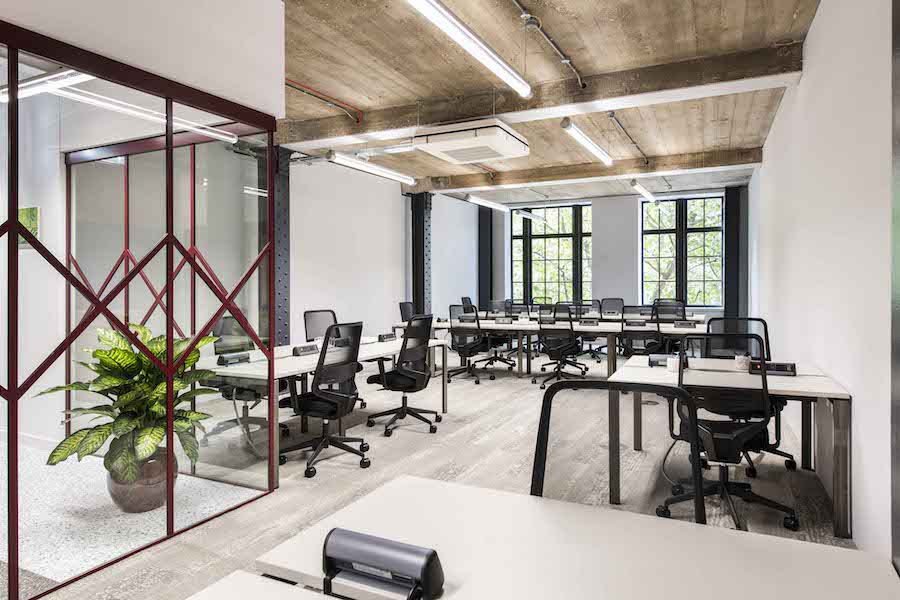- Avoiding traditional office leases
- The future of work
- How to optimise office spend
- How Hubble can help cut office costs
It’s funny how innovation can come along and shake up our way of thinking about the everyday aspects of our lives – and in such a way that we can’t possibly conceive of how or why we ever survived with the ‘old way’ of doing things.
20 years ago, when I was deciding which albums would make the cut to be uploaded to my iPod Nano, it would’ve blown my mind to think we’d ever be able to access a limitless world of streamed music through Spotify. The same goes for ride sharing, food delivery, film streaming, online shopping; the list goes on.
It’s a bit like that with our relationship with the spaces where we work. Pre-COVID, it was tough to conceive of the office as anything but a fixed, static space we went to five days a week. This pattern has been stubbornly dominating the daily routines of knowledge workers for decades. But today, we’re witnessing a great shake up in the way we think about where we work too.
This not only applies to the way that we approach work as individuals and teams – navigating the post-COVID landscape of remote working, and the place of the office in the workplace strategy mix; it also applies to the way that businesses approach office space as a cost.
For too long, businesses have had to accept office spend as the second-largest outgoing for most businesses – and a fixed, static, unwieldy cost at that.
To address this, two things are needed: a mindset shift – one that expands and unbundles our view of what the workplace is and how it functions. And secondly, the real-world means of enacting this new approach to workspace strategy, practically speaking.

It all starts with avoiding traditional office leases
Legal firm, Boodle Hatfield, has recently revealed that almost 250 football pitches worth of office floor space in the UK was taken out of service in 2021 as more employees started working from home.
Knowing this, why would you decide to lock yourself in for at least 10 years when you don’t have to? By doing so, you sacrifice the ability to scale up or down as and when your team grows and shrinks. You also expose yourself to hefty exit fees should you want, or need, to leave early for any reason. And let’s face it, traditional office spaces are boring. Which of the below would you feel more inspired in?

The future of work is flex
The great shakeup caused by COVID has given us the opportunity to re-imagine the world of work in a more flexible way, and that applies to office spend as well. Gone are the days of having to work five days a week from a bland, uninspiring office. Gone are the days of being tied to a traditional lease with little room for manoeuvre.
Organisations can now focus on building personalised, productive and purposeful workplaces, striking a balance between the stability of a fixed footprint and the flexibility of a variable one with almost infinite optionality and adaptability on every level.
They can manifest culture outside of the building. Attract and retain talent by obliterating borders, barriers and timezones. Reflect the personality of the company and personalise the experience for all. But perhaps most importantly, they can transform fixed office costs into variable ones, which allow them to flex and control their spend as they grow.

Beyond this, they can avoid hefty break clauses and exit fees should they need to rethink their setup in tougher times — if cash flow becomes a problem or, dare we say it, there’s another pandemic.
How to cut your office costs
If this sounds unattainable to those of you sitting scratching your head over whether you should have an office at all right now, trust us, it’s well within reach.
We at Hubble strive every day to help organisations configure their perfect workplace, and we’ve built a powerful platform to help do exactly that.
As a key part of this today is ensuring office spend is more flexible and sustainable, we’ve helped teams of all sizes access a global network of coworking spaces, meeting rooms, private day offices and event space in over 1,000 locations worldwide via the Hubble Pass.

This really helps businesses from a cost perspective as they only pay for what they use. They’re also well equipped to scale their business and usage up and down as required.
We’ve also helped organisations find full-time offices for as little as one month, with the broad network of spaces available with Hubble HQ free of restrictive, long term leases.

Cut your office costs with Hubble
Many businesses are now utilising more diverse networks of environments and experiences that are flexible, frictionless, fulfilling and future-proofed from a financial perspective — be that through coworking, taking on a flexible HQ, working onsite, offsite, online or face to face.
And to do this, it really is quite simple: you want to be able to scale up or down when required, and you don’t want to be paying for unused space.
With this, it makes the most sense to take a smaller HQ on a flexible contract and complement this with on-demand access to flexible workspaces worldwide.
And we’re here to help you implement exactly that so your workspace solution is the best it can be for your organisation and every employee working within it.
If you’d like to hear more about how we can help you optimise your workspace solution, just reach out to enquiries@hubblehq.com, or click on the button below.
